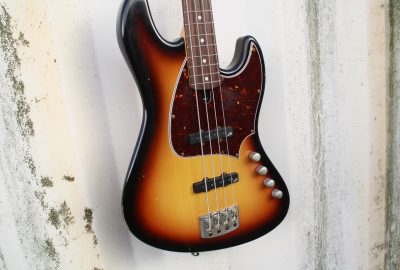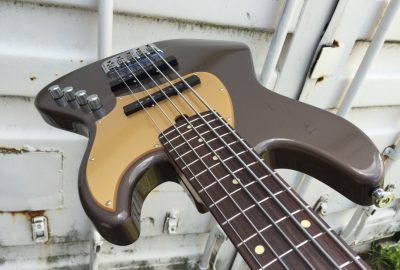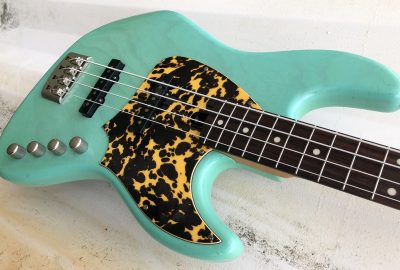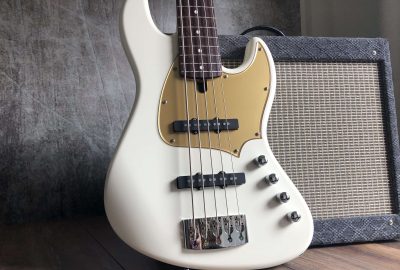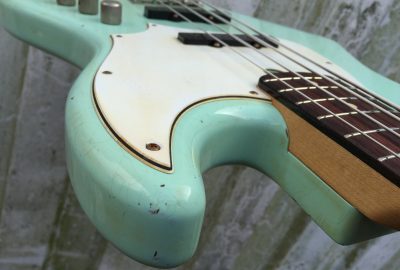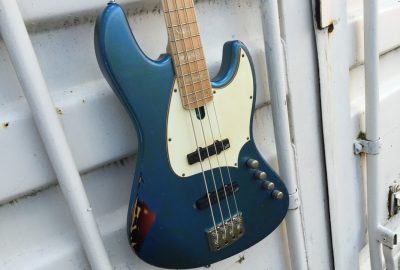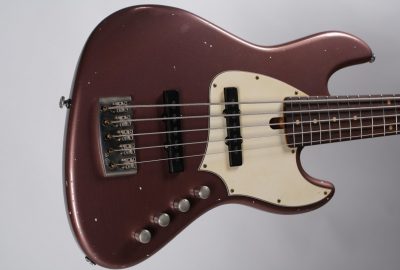BEBOP
A reinterpretation of a timeless classic
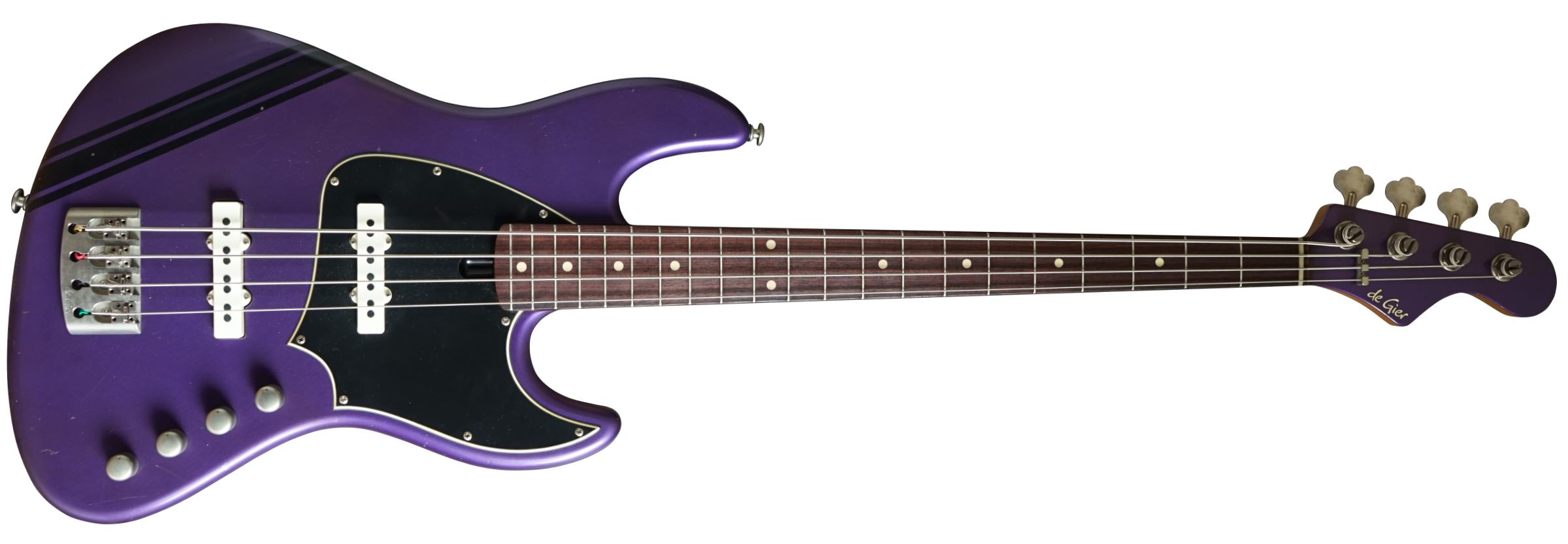
Bebop is the bass that put us on the map. I had been building boutique style basses (with gorgeous woods, laminates, preamps, etc) for many years. All the while customers asked: ‘when are you going to build a Jazz?’ After saying no for the 20th time or so, I finally thought, well why not? It changed everything.
Sander de Gier
Check out Bebop's strengths
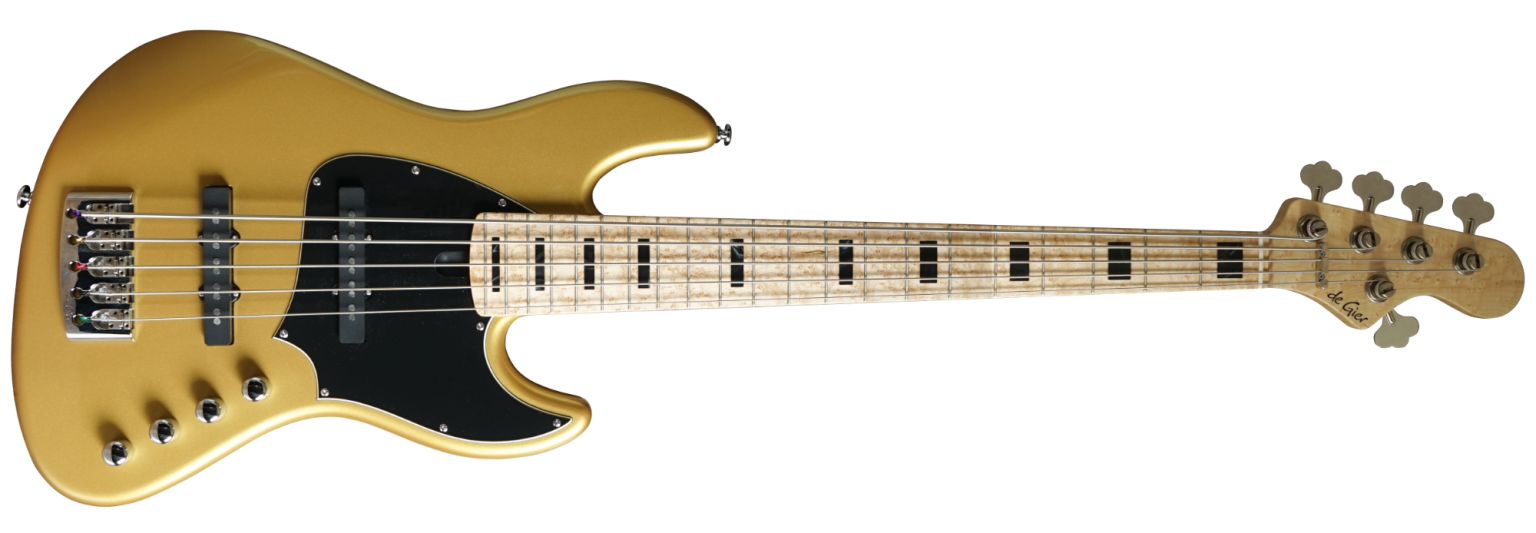
Controls
Volume, Volume, Dual Tone and Fatboost. Dual tone means that you can pull to switch capacitors.
Fatboost is an active but subtle bass boost. It is designed to keep the sound as close as possible to the original passive sound. The boost is activated by a switch and gives you a maximum of 12dB boost of low frequencies. (We set it at about 4dB standard). It is ultra low noise. The result is as if your passive sound grew up intstantly. In the off position it is true bypass for a 100% passive sound. The Fatboost can be preset to your desired dB’s via a trimmer pot at the back.
Hidden fretslots
I use a fairly unique method for creating fretslots. You can learn more in this video. In short: I found a way to make use of the inner strenght of the wood instead of cutting it away. That enhances stability, it also prevents fretends from sticking out over time. It’s also quite elegant.
Tuners & Headstock
Light weight tuners help to eliminate the neck dive caused by heavy tuners. However, the mass of heavy tuners does add to tone, but a thicker headstock does a similar thing. So on Bebop you have both goodies: light weight, balanced, and enhanced tone.
Neck stability
Nobody likes a neck that’s constantly on the move. I implement a steel dual action trussrod and carbon fibre reinforcements into each neck. This creates stability and allows for comfortable neck adjustments, as well as easy future servicing. This neck is designed to last.
Fingerboard radius
The curvature of a vintage fingerboard is often a 7.25” radius. While it plays great, the disadvantage is that the strings are in the same radius while pickup poles are flat. So outer strings are often louder than inner strings because they are closer to the pickup. That’s why I have chosen a compound radius of 7.25” to 12”. A compound radius also allows for a lower action. And if you don’t prefer a low action, no problem… I’ll be happy to set it up higher for you.
Small frets
Many vintage basses have small frets. They play so easy, it’s almost as if you play better. But if they wear down, you can’t level them anymore, you need a refret. On Bebop I use small vintage frets, but made from a harder nickel silver alloy. They last.
Noise
The pickups are single coils and therefore a bit noisy. In order to eliminate this as much as possible we shield the pickup routing cavities with nickel paint. The control cavity is shielded with thick copperfoil. The pickguard is grounded as well, to eliminate electrostatic noise.
Bridge
The bridge is solid brass with quick change string insert holes. Solid brass has a different sound than a vintage steel bridge. It’s hard to express in words, but I’d say that it’s a bit more evenly balanced and wider in tonal range. Perfectly suited for a more modern bass.
Balance
The strap button is located above the center of the body. This helps to give the bass a better balance when used with a strap.

ordering
Bebop 4 string
| Price within the EU (incl. VAT): | € 4150,- |
| Price outside the EU (export price excl. VAT): | € 3430,- |
Bebop 5 string
| Price within the EU (incl. VAT): | € 4295,- |
| Price outside the EU (export price excl. VAT): | € 3530,- |
Ordering from inventory
We usually have some instruments in stock. We do this to serve our customers who first want to try out a few guitars or basses before they decide.
Configure online
Our Bebop can be configured online. Choose woods, colours, pickups and a lot more in our order form. After submitting this form, you will receive an email with a confirmation and payment details within 24 hours (workdays).
Contact us
Let us help you make the right choices. Feel free to contact us and we will be happy to discuss the possibilities with you. Of course you are also more than welcome to visit our shop.

Standard configuration
| Body | Alder |
| Neckthrough | Hard Maple |
| Fingerboard | Rosewood |
| Pickups | Fralin, Nordstrand, Lollar, Aguilar |
| Bridge | Custom de Gier / ETS |
| Tuners | Hipshot ultralite |
| Controls | Volume, Volume, Dual Tone and Fatboost |
| Color | All traditional solid colors available. For sunburst and metallics see custom options. |
| Fatboost | The De Gier/Vanderkley Fatboost is an active but subtle bass boost. |
Custom options
| Lefthanded | € 250,- |
| Swamp ash body | €90,- |
| Maple fingerboard (coated) | no extra |
| Other wood for body/fingerboard | See orderform |
| Fretless | See orderform |
| Fingerboard bindig | € 150,- |
| Block inlays | € 180,- |
| Different pickups | Upon request |
| Sunburst | no extra |
| Custom finish | Upon request |
| Metallic finish | no extra |
| Relic | € 180,- |
| Matching headstock | € 90,- |
Technical specifications
| 4 string | 5 string | |
| Neckwidth at nut | 38 mm | 46 mm |
| Neckwidth at last fret | 63 mm | 78 mm |
| Thickness at nut | 20 mm | 20 mm |
| Thickness at 12th fret | 23.5 mm | 23.5 mm |
| Fretsize | small | small |
| Stringspacing at bridge | 19.5 mm | 19 mm |
| Radius fingerboard | 7.25″ to 12″ | 7.5″ to 12″ |
| Neckshape | C | C |
| Number of frets | 21 | 21 |
| Headstock angle | Bolt on | Bolt on |
| Scale | 34″ | 34″ |



